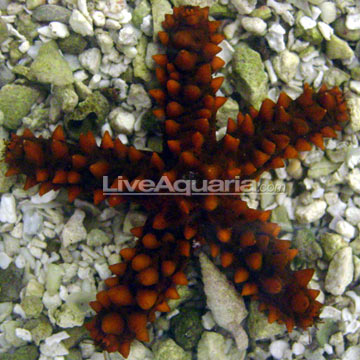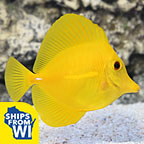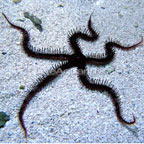
Additional locales and sizes may be available!
Additional locales and sizes may be available! Email me when availableQuick Stats
What do these Quick Stats mean? Click here for more information
What do these Quick Stats mean? Click here for more information
Overview
The Red Thorny Sea Star has a thick, gray body with multiple bright red tubercles extending upward along each of its five arms. Red stripes connect these protrusions, giving its back the appearance of wires interconnecting in a grid-like fashion. It is found in shallow tidal pools and up to 100' deep reefs in the Caribbean Ocean.
The Red Thorny Sea Star requires a large aquarium with ample supplies of live rock. A small specimen will eat algae. As it grows older, however, it is not reef compatible, as it will eat soft corals, sponges, tubeworms, clams, starfish, and other invertebrates. It should not be housed with puffers.
The Red Thorny Sea Star is very intolerant of sudden changes in oxygen levels, salinity and pH of the water, and cannot tolerate copper-based medications. The drip acclimation method is highly recommended for all Sea Stars due to their intolerability to changes in water chemistry. It should never be exposed to air while handling.
Breeding in an aquarium is extremely difficult with no distinguishing characteristics to help differentiate males from females.
In the aquarium, the diet can consist of chopped clams, shrimp, fish, and squid fed once a week.
Approximate Purchase Size: 2" to 4"









